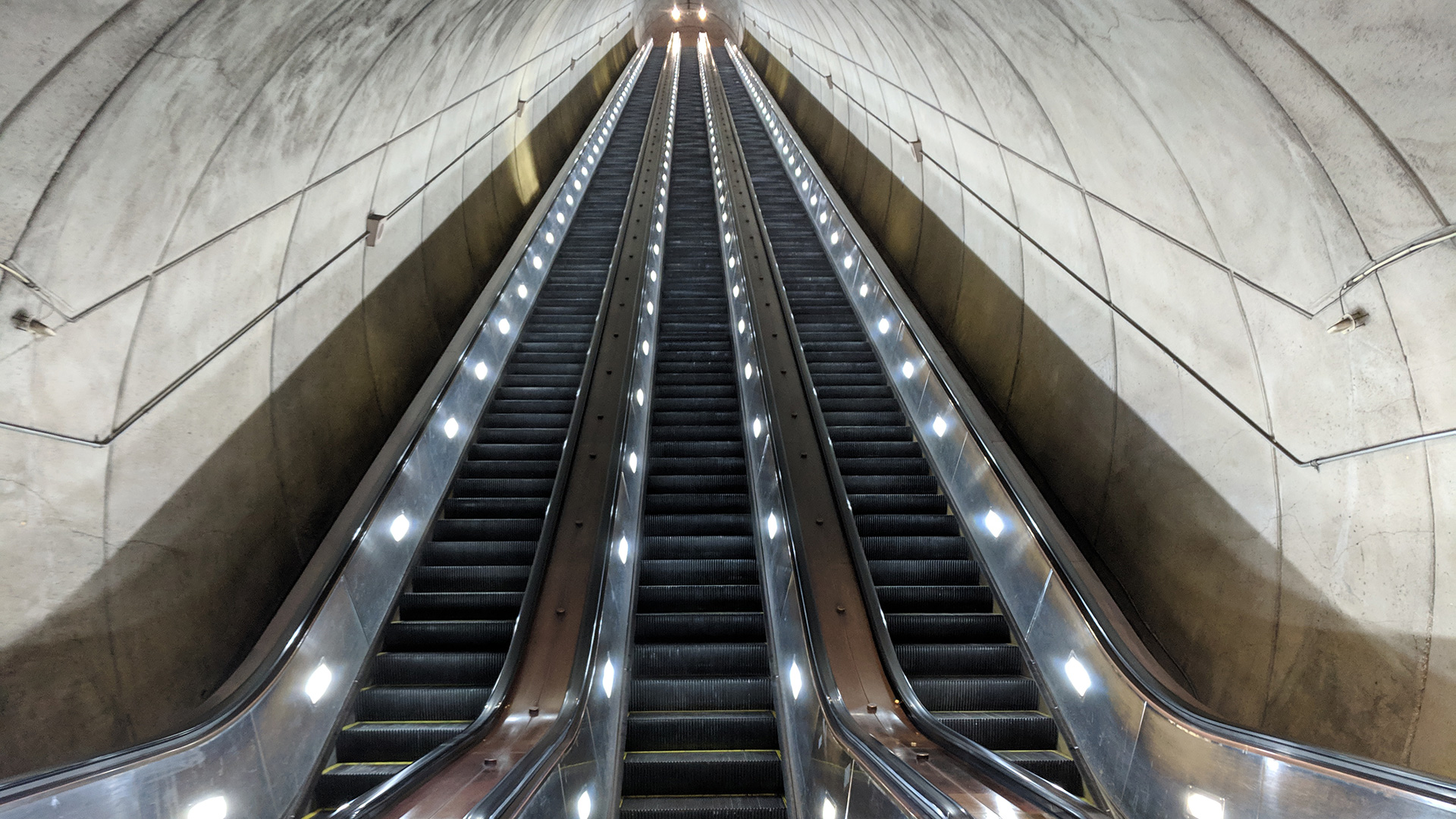
Anyone who has been to a busy subway station during peak congestion – say, the morning rush hour or funneling out of an arena after a concert or sporting event – is all too familiar with the bottlenecks created by people jockeying to get onto escalators. So what’s the most efficient way to get people moving? Michael C. Fu at the University of Maryland’s Robert H. Smith School of Business ran an analysis to find out.
Fu, Smith Chair of Management Science and professor at the Institute for Systems Research, looked at whether the often-implied two-lane escalator etiquette of “walk left, stand right,” is truly the best way to deal with jammed people-movers.
Prior research has suggested that during high-congestion periods, it would be more efficient if everyone just stood in both lanes, but Fu was skeptical of this counterintuitive conclusion.
“In practice, such a policy is enormously difficult to implement,” says Fu. “It’s really hard to get people to change their behaviors, and many people think they should have the right to walk on an escalator.”
That conclusion’s main assumption is that the proportion of standers is overwhelmingly higher than walkers, which is not always the case, he says. The number of walkers could exceed the number of standers in some stations, particularly those with relatively short escalators.
He used deterministic queueing models that considered both system and individual objectives to analyze various scenarios of walkers and standers in making the most efficient use of escalators (or moving walkways).
Fu’s analysis concludes that the best way to clear a busy platform during rush hour is to allow everyone to access both lanes of an escalator, regardless of their desire to walk or stand. It’s the well-known operations management theory that forming a pooled queue is more efficient than using dedicated queues.
“The key is to allow jockeying and load balancing to enable a pooling effect to clear the platform, and then sort out the walkers and standers over the course of the escalator,” says Fu.
This would help improve efficiency, although there could be negative effects on safety, since it would require more movement on the escalator itself, he says.
“An alternative solution would be to allow the wannabe walkers to quickly get to the head of the left lane and then after they are (mostly) cleared, convert the escalators to standing only.”
He says transit systems could use a signaling system to indicate lanes in use for walkers and standers that could change based on rush hour capacities – like the signals used on many roads and bridges that change direction based on rush hours. The signals could work on a fixed time schedule or switch based on sensors, says Fu.
“If this policy were known to all the users of the system, it could also affect behavior and increase efficiency, as knowing that they would be at the head of the queue might incentivize some standers to convert to walkers.”
Read Fu’s research, “Escalator Etiquette: Stand or Walk? A Systems Analysis,” in the journal Systems.
Media Contact
Greg Muraski
Media Relations Manager
301-405-5283
301-892-0973 Mobile
gmuraski@umd.edu
Get Smith Brain Trust Delivered To Your Inbox Every Week
Business moves fast in the 21st century. Stay one step ahead with bite-sized business insights from the Smith School's world-class faculty.